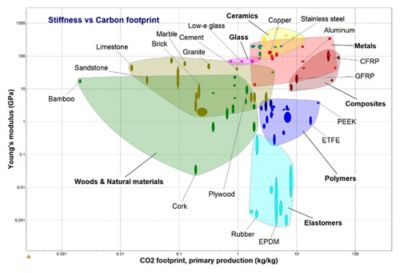-
United States -
United Kingdom -
India -
France -
Deutschland -
Italia -
日本 -
대한민국 -
中国 -
台灣
-
Ansys si impegna a fare in modo che gli studenti di oggi abbiano successo, fornendogli il software gratuito di simulazione ingegneristica.
-
Ansys si impegna a fare in modo che gli studenti di oggi abbiano successo, fornendogli il software gratuito di simulazione ingegneristica.
-
Ansys si impegna a fare in modo che gli studenti di oggi abbiano successo, fornendogli il software gratuito di simulazione ingegneristica.
-
Contattaci -
Opportunità di lavoro -
Studenti e Accademici -
Per Stati Uniti e Canada
+1 844.462.6797
ANSYS BLOG
September 19, 2019
How to Teach Eco-Friendly Construction Materials Selection for Building Facades
When architects design a building, they must consider its structural, visual, cultural and environmental specifications. Part of this work includes partnering with engineers to find materials that are structurally suitable for their designs. In recent years, finding eco-friendly building materials has become just as important.
As the world of building materials grows, so does the need for architects to gain materials knowledge.
The facade of this building serves both fashion and function — but how were these decisions made?
So, how can architects find the most eco-friendly building materials that are structurally appropriate for their designs? And how can this materials knowledge be incorporated into architecture courses?
By focusing on the natural intersections of architecture and engineering in building facade materials, curricula can introduce the task of finding optimal construction materials.
Architecture Includes Finding Eco-Friendly Construction Materials and Solutions
The role of architects is to visually interpret and articulate the vision of their clients, whether they are private individuals, governments or corporations. Environmental impact is becoming a growing concern with many customers.
Thus, the architect’s role is expanding. They require awareness of sustainability to address environmental challenges.
A building’s facade is the first thing people see, making it a key component of architectural design.
This includes understanding the short and long-term impacts of design decisions — such as choosing physical fasteners (like nuts and bolts) over chemical fastening (like adhesives).
The architect’s role doesn’t stop with developing a plan. They are also required to continuously communicate that design to the engineers who will build it. As a result, a broad understanding of materials, from their structural properties to their ecological impact, will help architects in their ability to convey their design to engineers.
Increasing materials knowledge in the architectural field can start at universities. By using Ansys Granta’s CES EduPack, with its architecture database, professors can add materials information into their architecture courses.
The question then becomes: where can professors add materials into the existing curricula? One logical area is with building facade materials.
Building Facade Materials as an Introduction to Property-Guided Design Decisions
Building facades are an excellent example of where architecture meets engineering, because they determine the building’s appearance and structural performance.
As a result, facades are ideal structures to introduce architecture students to the best practices they will need to communicate with engineers.
Building facade materials can have several requirements aside from aesthetic and tactile considerations.
eco-friendly-construction-materials-selection-building-facades-edupack-stiffness-co2-footprint.jpg
For instance, the materials’ mechanical performance, durability, cost, processability and environmental impacts need to be considered.
The architecture database in CES EduPack focuses on materials commonly used by architects — allowing students to quickly and easily see and compare material properties. Using powerful visualization assets, architects can make materials selections and communicate them to others.
For instance, architects can compare the Young’s modulus and CO2 footprint of materials to determine which ones meet the customer’s eco-vision and the structural needs of the building. Comparing various material properties, like in the example above, is a materials selection method commonly employed by engineers, giving the architect valuable skills for the future.
To learn about other tools that can help architects choose eco-friendly construction materials, read: Material Intelligence with Ansys Granta.













